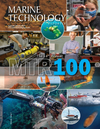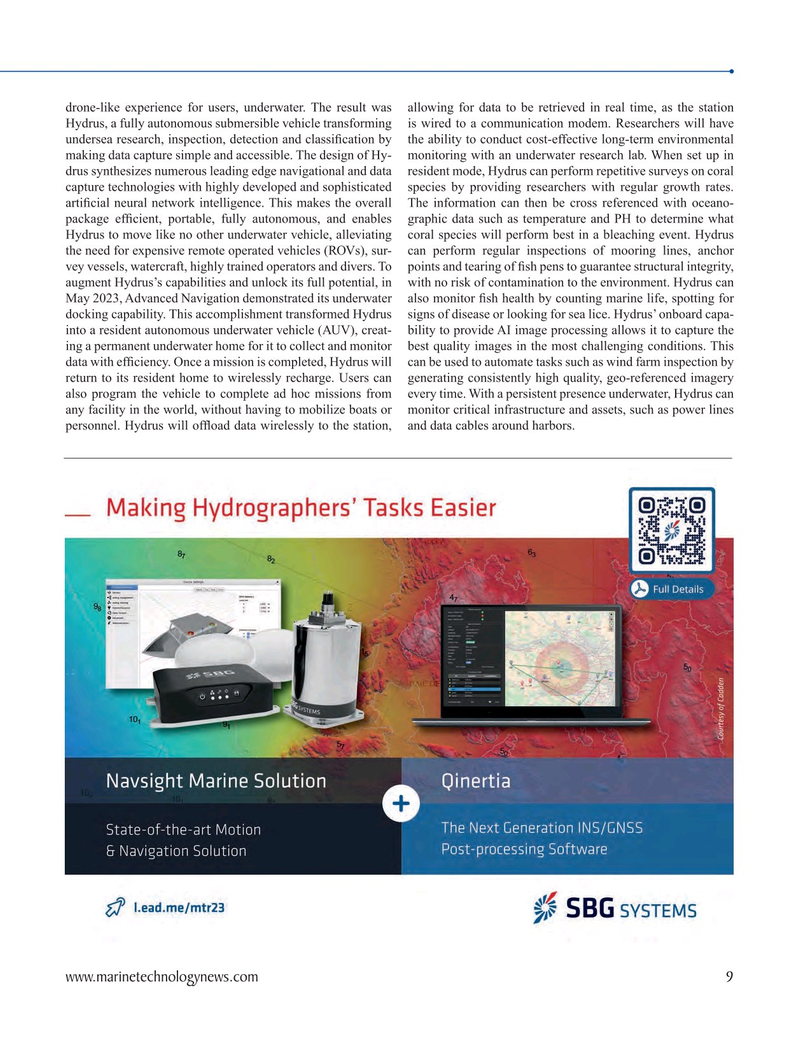
Page 9: of Marine Technology Magazine (September 2023)
Read this page in Pdf, Flash or Html5 edition of September 2023 Marine Technology Magazine
drone-like experience for users, underwater. The result was allowing for data to be retrieved in real time, as the station
Hydrus, a fully autonomous submersible vehicle transforming is wired to a communication modem. Researchers will have undersea research, inspection, detection and classi? cation by the ability to conduct cost-effective long-term environmental making data capture simple and accessible. The design of Hy- monitoring with an underwater research lab. When set up in drus synthesizes numerous leading edge navigational and data resident mode, Hydrus can perform repetitive surveys on coral capture technologies with highly developed and sophisticated species by providing researchers with regular growth rates. arti? cial neural network intelligence. This makes the overall The information can then be cross referenced with oceano- package ef? cient, portable, fully autonomous, and enables graphic data such as temperature and PH to determine what
Hydrus to move like no other underwater vehicle, alleviating coral species will perform best in a bleaching event. Hydrus the need for expensive remote operated vehicles (ROVs), sur- can perform regular inspections of mooring lines, anchor vey vessels, watercraft, highly trained operators and divers. To points and tearing of ? sh pens to guarantee structural integrity, augment Hydrus’s capabilities and unlock its full potential, in with no risk of contamination to the environment. Hydrus can
May 2023, Advanced Navigation demonstrated its underwater also monitor ? sh health by counting marine life, spotting for docking capability. This accomplishment transformed Hydrus signs of disease or looking for sea lice. Hydrus’ onboard capa- into a resident autonomous underwater vehicle (AUV), creat- bility to provide AI image processing allows it to capture the ing a permanent underwater home for it to collect and monitor best quality images in the most challenging conditions. This data with ef? ciency. Once a mission is completed, Hydrus will can be used to automate tasks such as wind farm inspection by return to its resident home to wirelessly recharge. Users can generating consistently high quality, geo-referenced imagery also program the vehicle to complete ad hoc missions from every time. With a persistent presence underwater, Hydrus can any facility in the world, without having to mobilize boats or monitor critical infrastructure and assets, such as power lines personnel. Hydrus will of? oad data wirelessly to the station, and data cables around harbors.
www.marinetechnologynews.com 9
MTR #7 (1-17).indd 9 9/30/2023 10:53:10 PM

 8
8

 10
10
